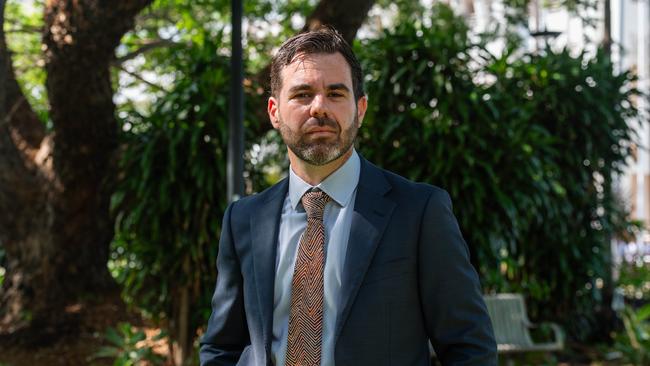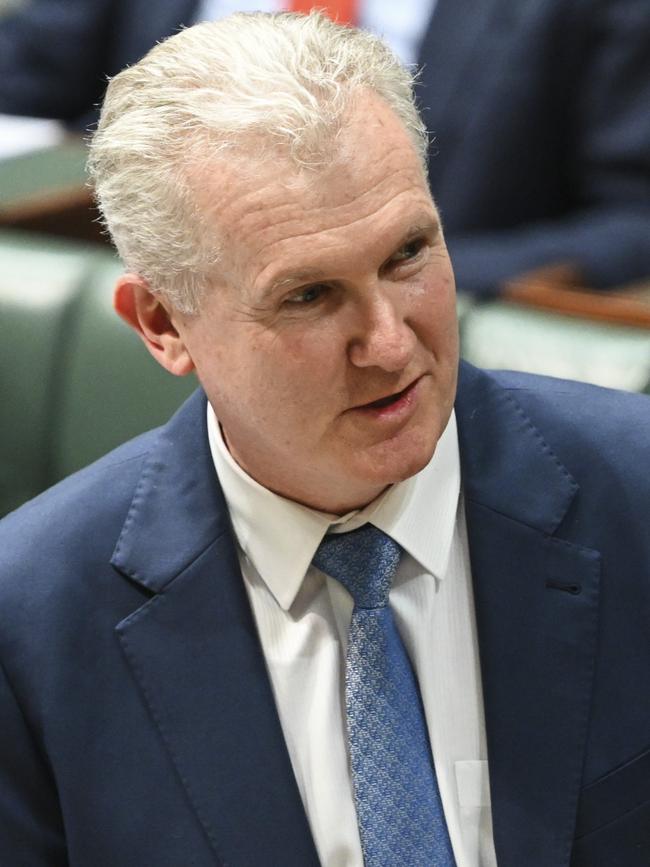NT Arts Minister Chansey Paech calls for national policy to manage art centres
NT Arts Minister Chansey Paech has called for a new national regime to manage the nation’s art centres following the white hands on black art scandal.

NT Arts Minister Chansey Paech has called for a new national regime to manage the nation’s art centres in light of the white hands on black art scandal.
Mr Paech’s intervention comes as the controversial APY Arts Centre Collective was referred to two different bodies, after a South Australian investigation found evidence of fraud, bullying and white interference with Aboriginal artists’s work.
Following a meeting between the territory minister, his South Australian counterpart Andrea Michaels and Tony Burke on Friday over the APYACC, Mr Paech said he is advocating the federal government to develop a nationally consistent policy to manage Indigneous art centres.
The APY Art Centre Collective was referred to the Office of the Registrar of Indigenous Corporations and the Australian Competition and Consumer Commission, following an independent investigation sparked by months of reporting by The Australian.
“The NT is prepared to work with the federal government and other jurisdictions on this (policy),” Mr Paech said.
“The policy needs to be nationally consistent because a number of peak art bodies such as Desart and ANKA (Arnhem, Northern and Kimberley Artists) are based on cultural boundaries rather than state boundaries.”
Mr Paech, who has Indigenous heritage and Eastern Arrernte and Gurindji links, said it was “not possible” to draw an analogy between the use of assistants by historic European artists and contemporary Aboriginal artists.
The comments appear to hint toward words from the Federal Arts Minister, who told Nine Newspapers back in May that he was not concerned with the use of white assistants. “I won’t be telling First Nations artists whether or not they are allowed to be assisted,” he said.

“Most Aboriginal artists are painting tjurkurpa, which is an ancestral right that is handed down through families,” he said.
“It is more than art: it’s law, culture and history. Only certain people have the right to paint tjurkurpa, which is often specific to their totems and kinship groups.”
“What matters is to make sure that people have creative control.
“But I certainly have no intention of implying a standard and set of rules around First Nations artists that are not applied to any other artists in the world or throughout history.”
Mr Paech said the independent panel review affirmed consumers want to know the origins of the works they buy and that consumer protections and cultural management strategies are needed.
A spokesman for Mr Burke said “the government has received the report and it’s been referred to the relevant agencies.”
Both ORIC and the ACCC have the power to initiate criminal and civil proceedings.
The Australian understands that senior artists have been bussed in from the APY Lands to Adelaide by APYACC boss Sky O’Meara.
It is believed APYACC general manager Skye O’Meara is securing the support of board members and preparing artists for possible media interviews in light of the panel’s findings.
A NSW gallery owner, who spoke under the condition of anonymity, said she wanted the investigations into APY resolved quickly. “The more this drags on, the more it affects consumer confidence,” she said.
Art Ark founder Guy Hayes said the developments in the probe were encouraging for the artists who spoke out against the alleged practices.
“This movement in the investigation, after a significant delay, is crucial for bringing justice and recognition to the artists affected by these allegations and I hope future developments are more swift,” he said.
Melbourne art lawyer Alana Kushnir said that public attention and any potential ACCC involvement could impact the interest of purchasing APY work.






To join the conversation, please log in. Don't have an account? Register
Join the conversation, you are commenting as Logout